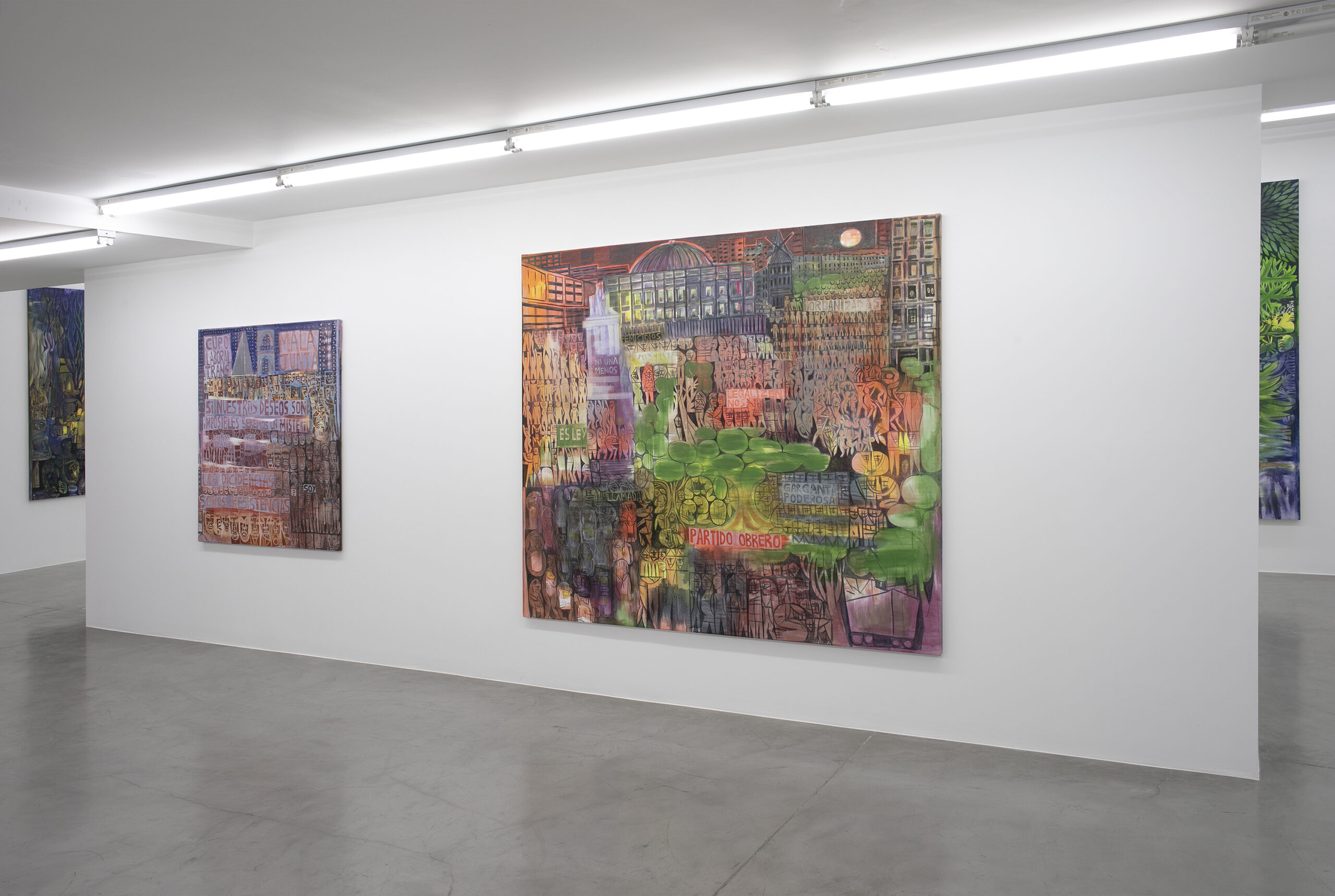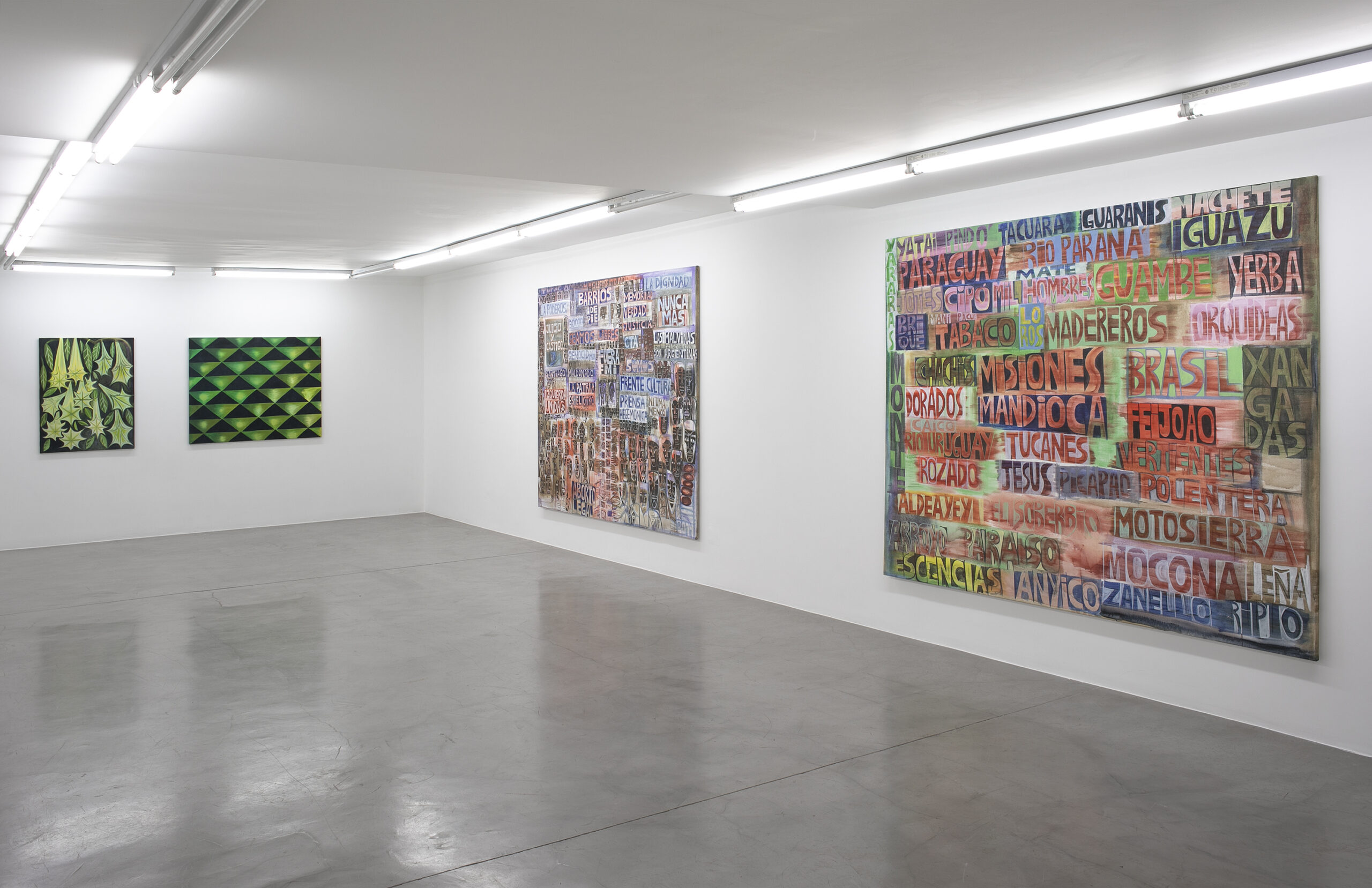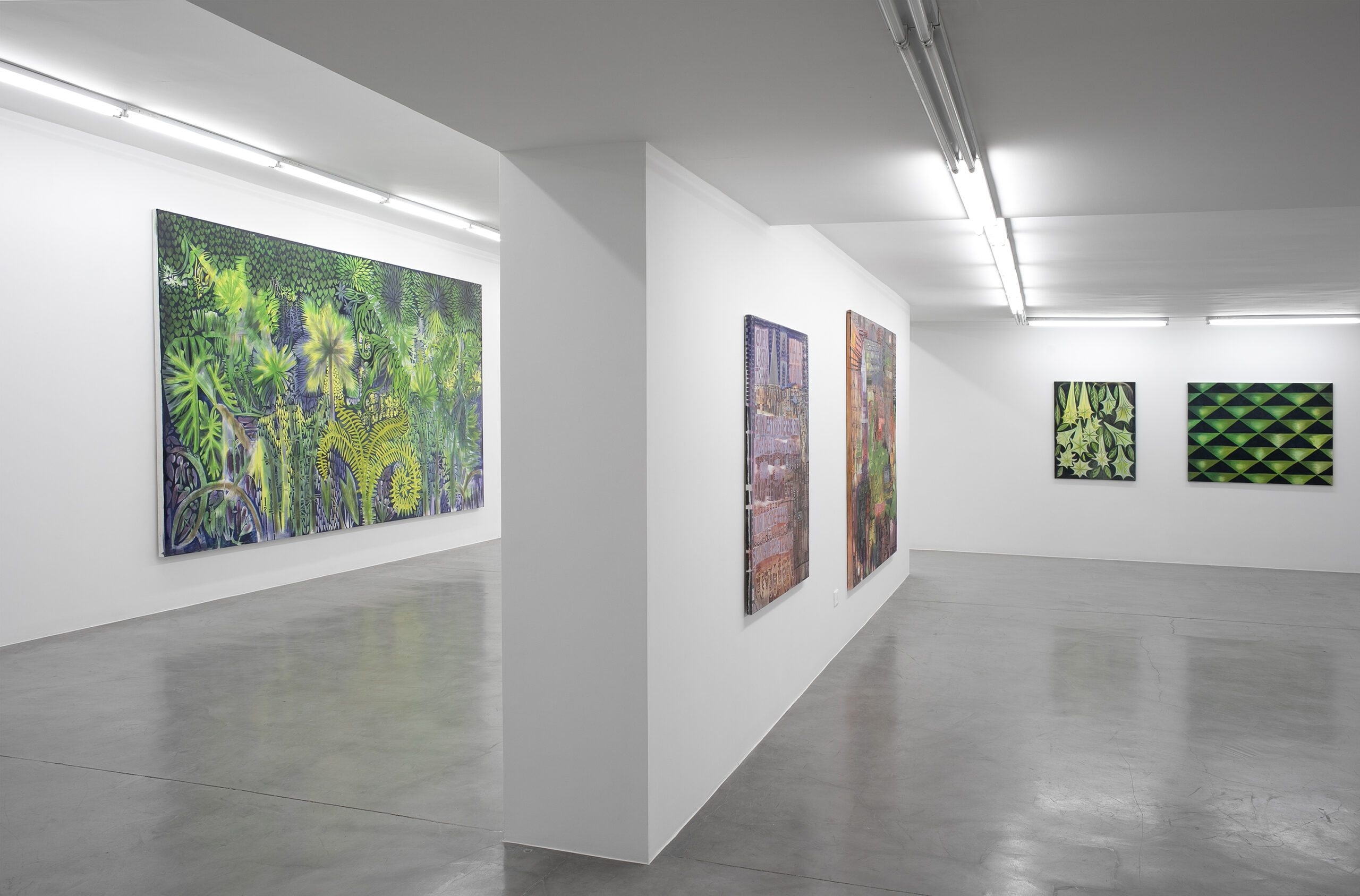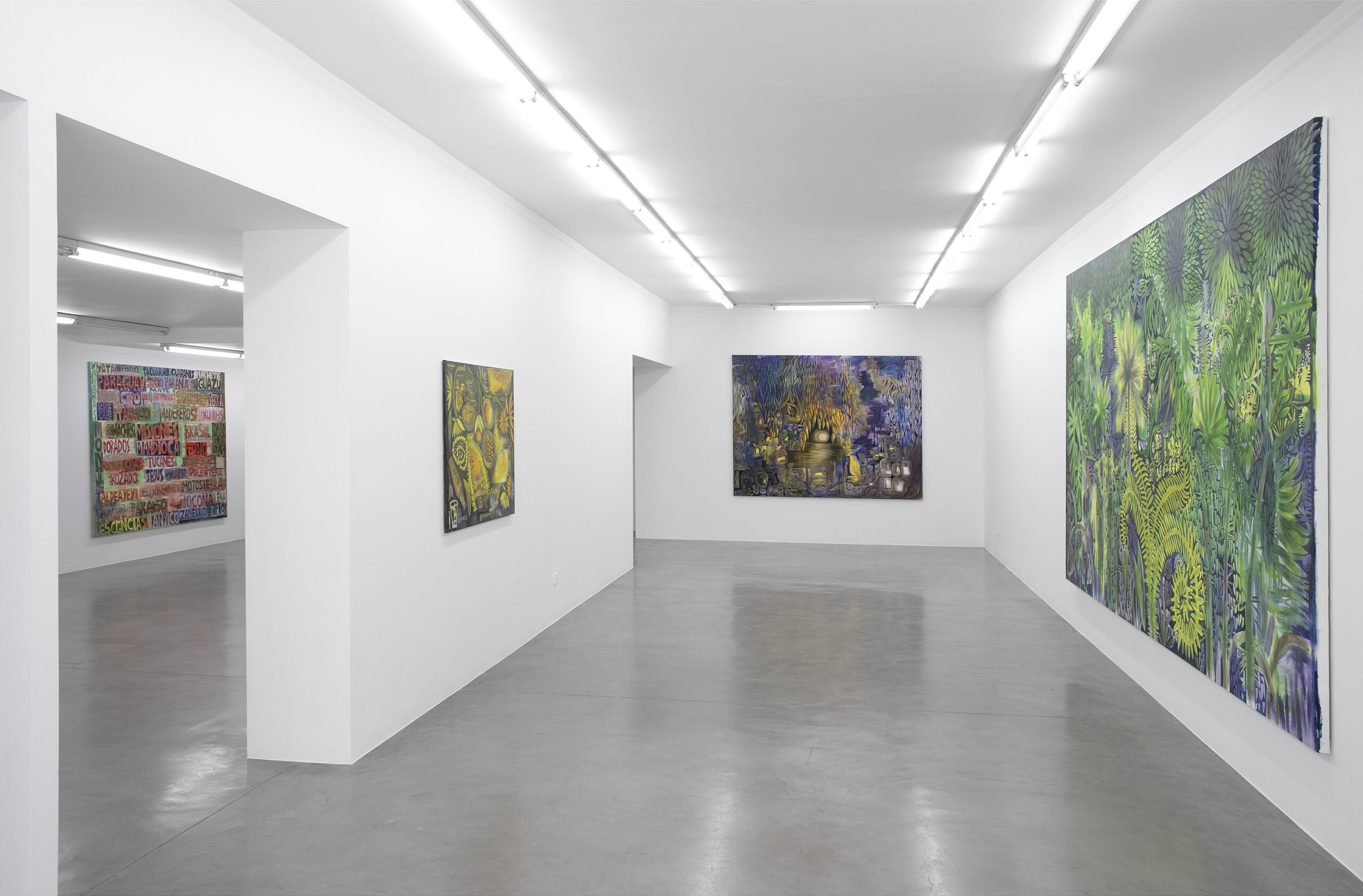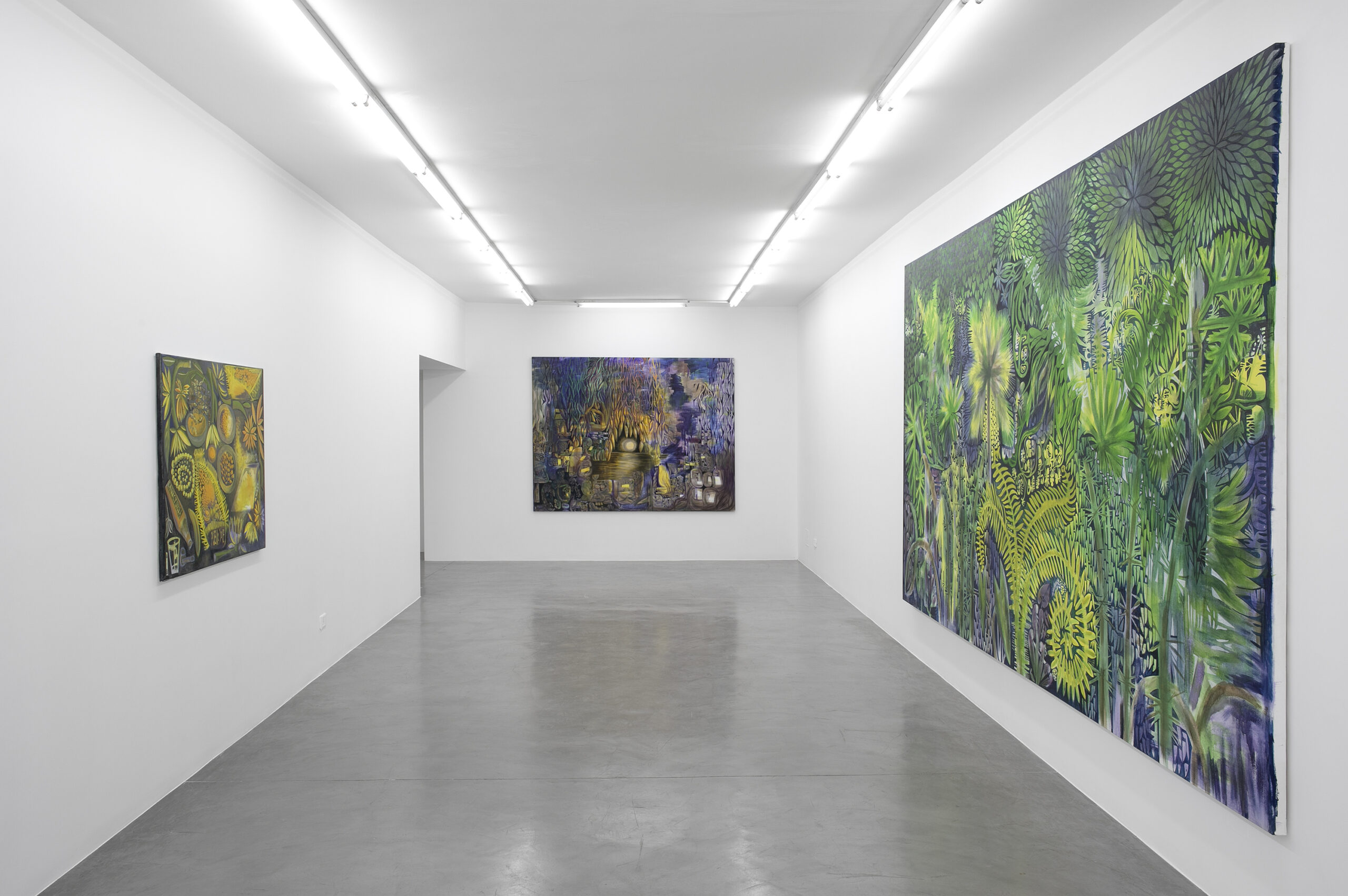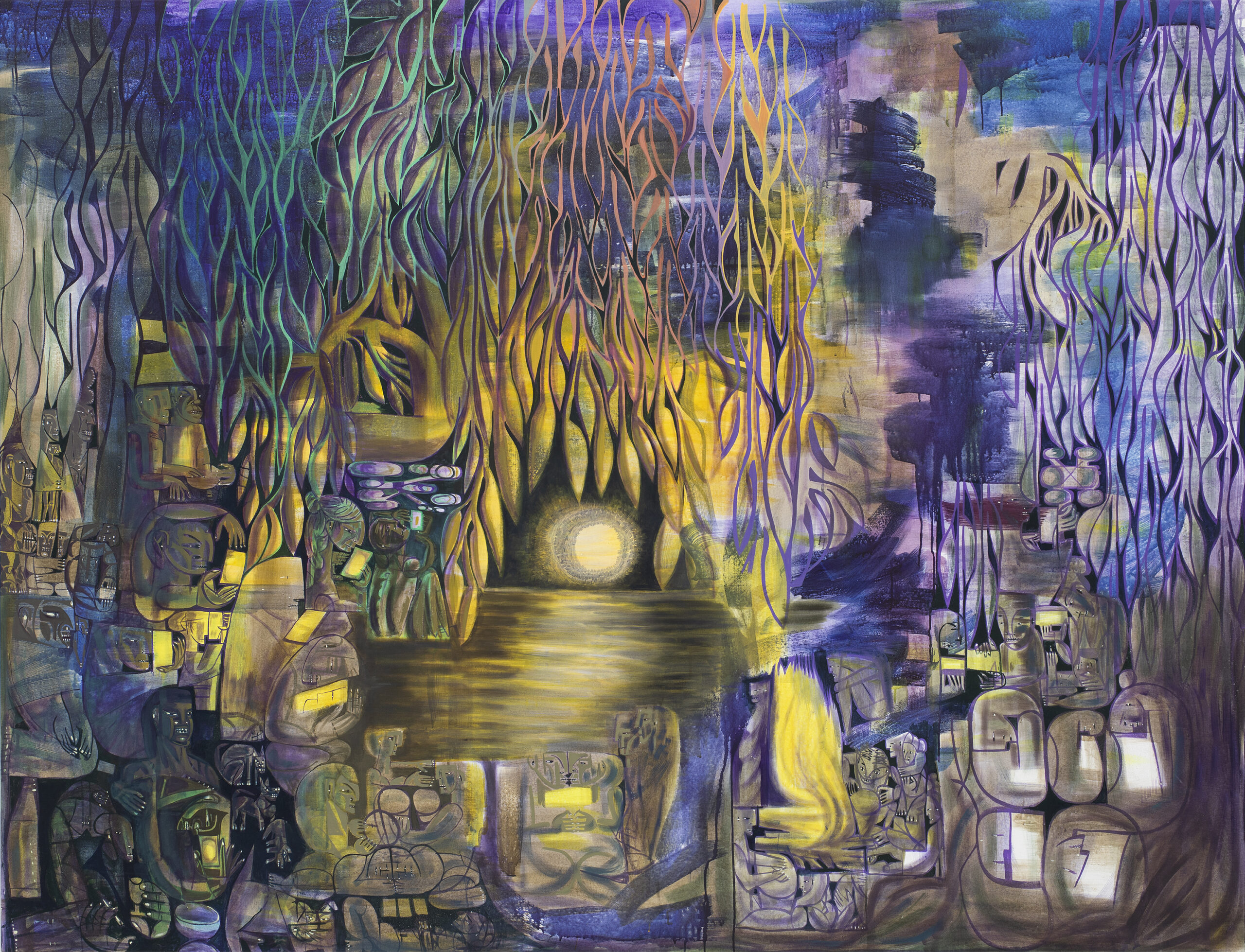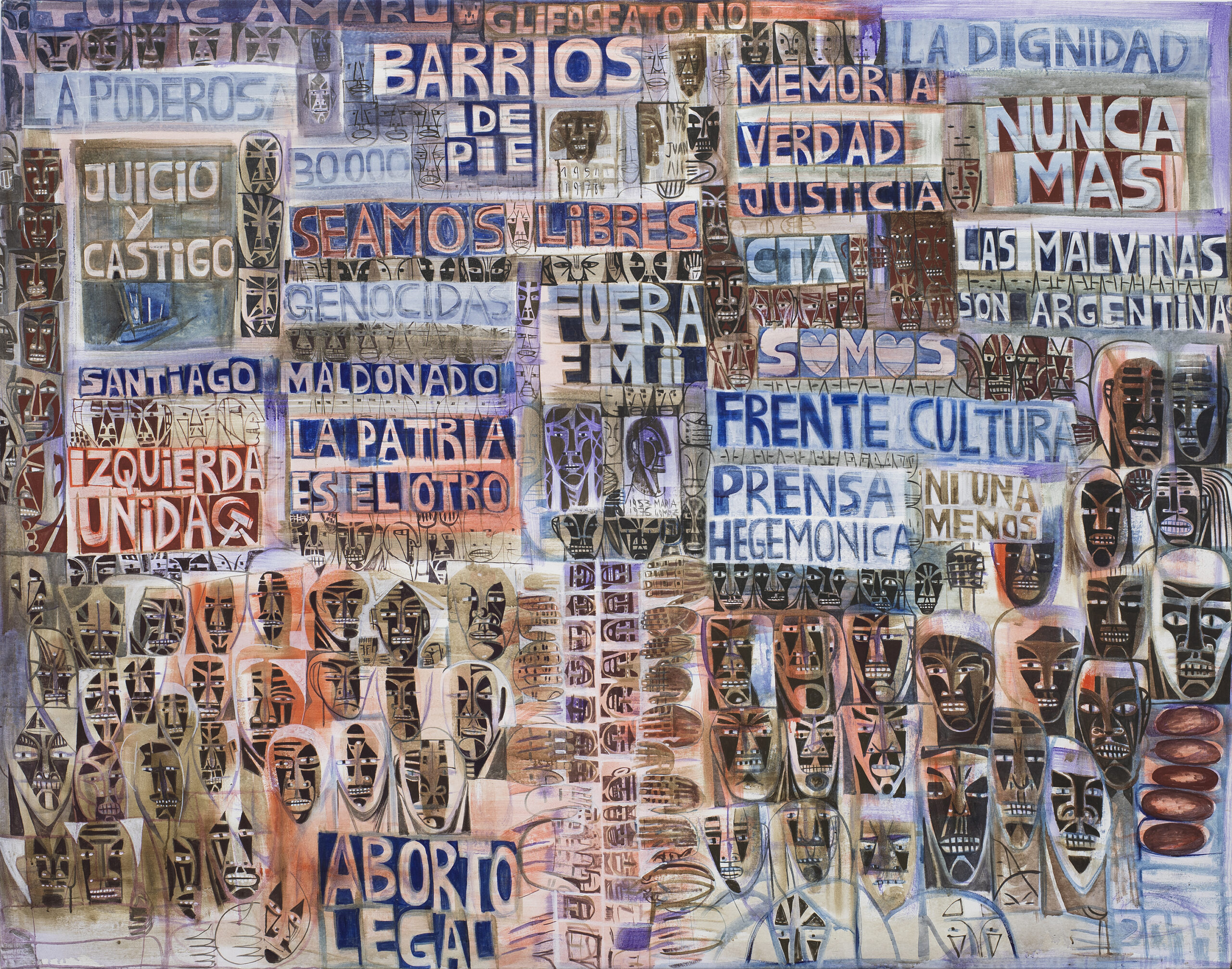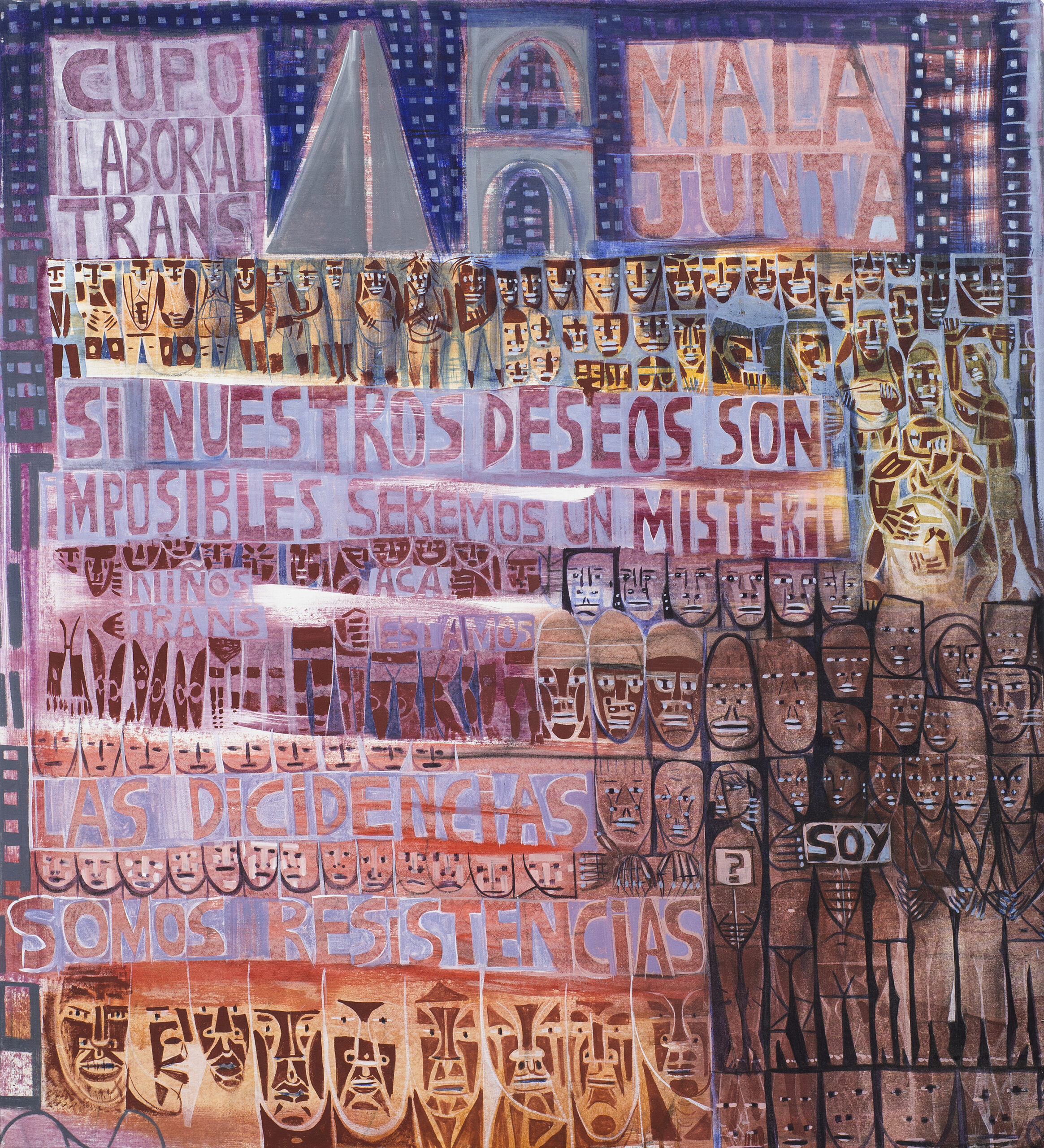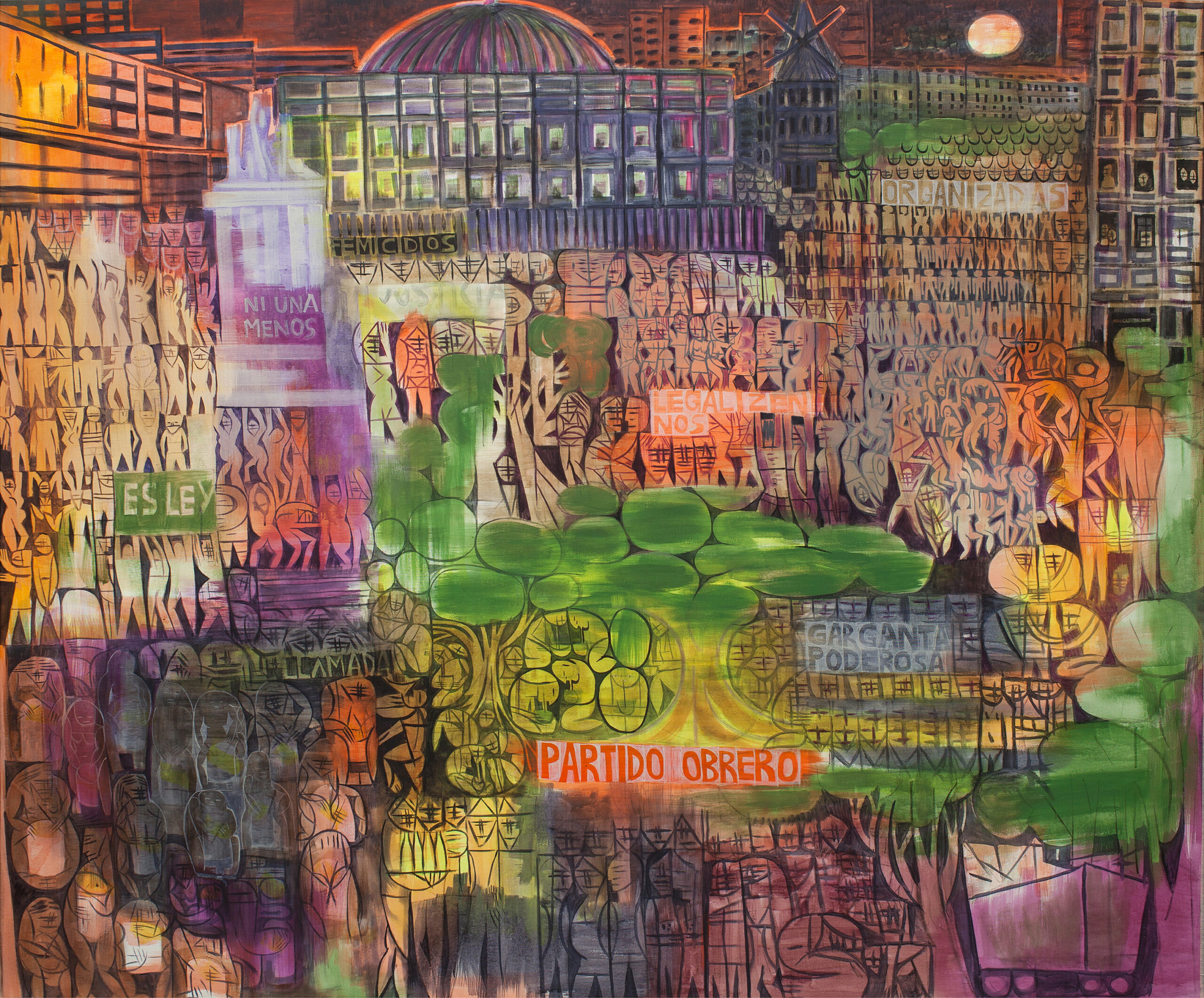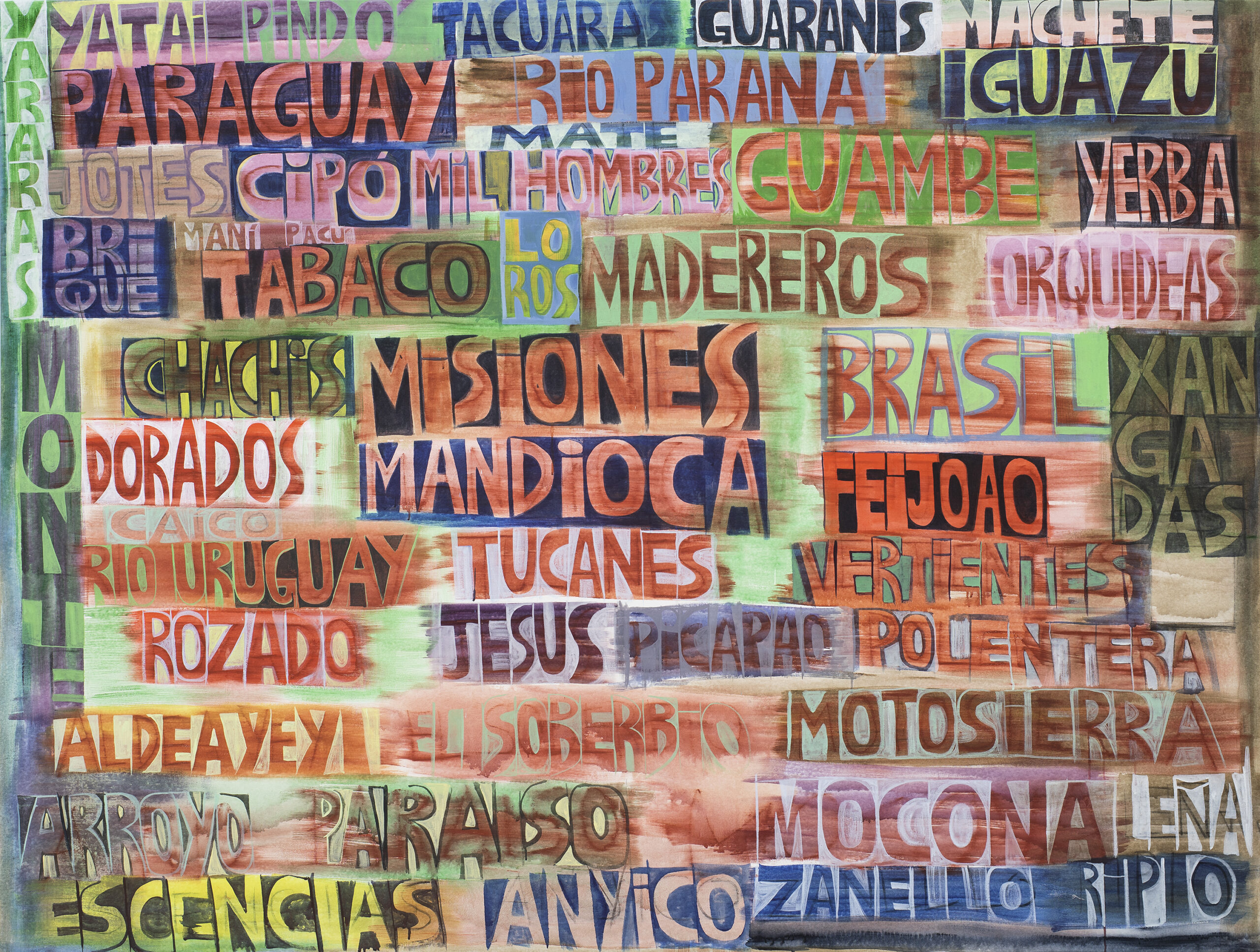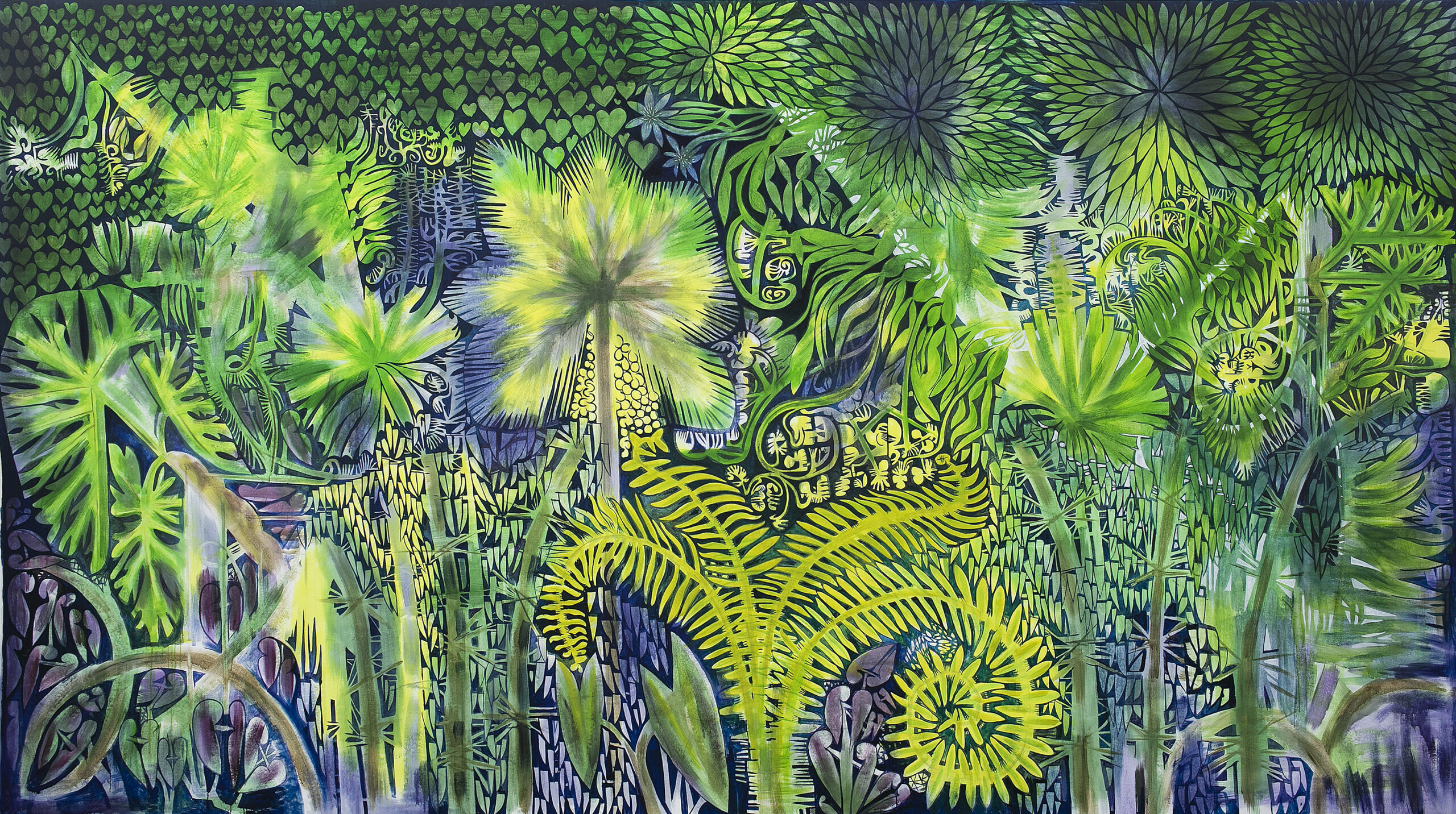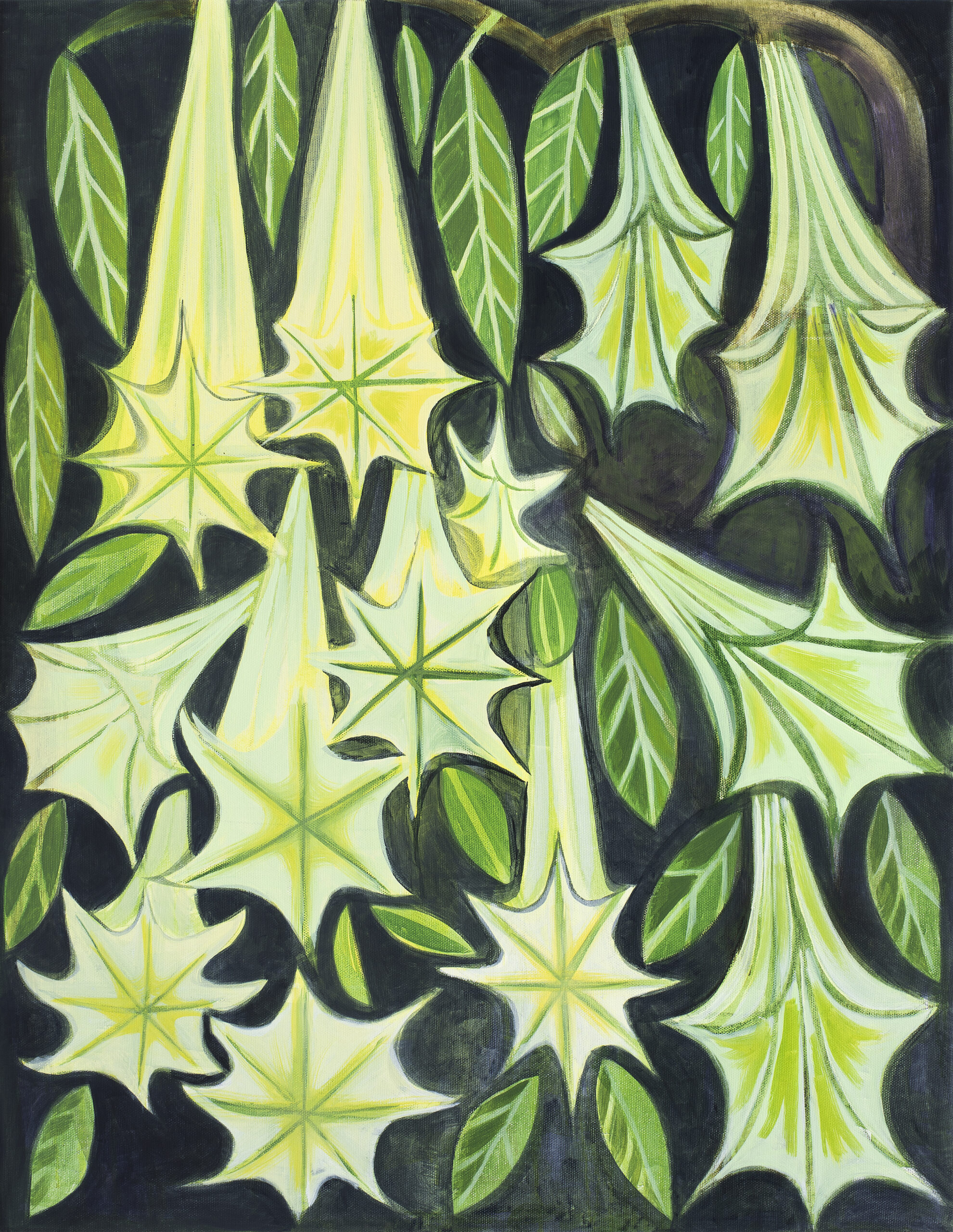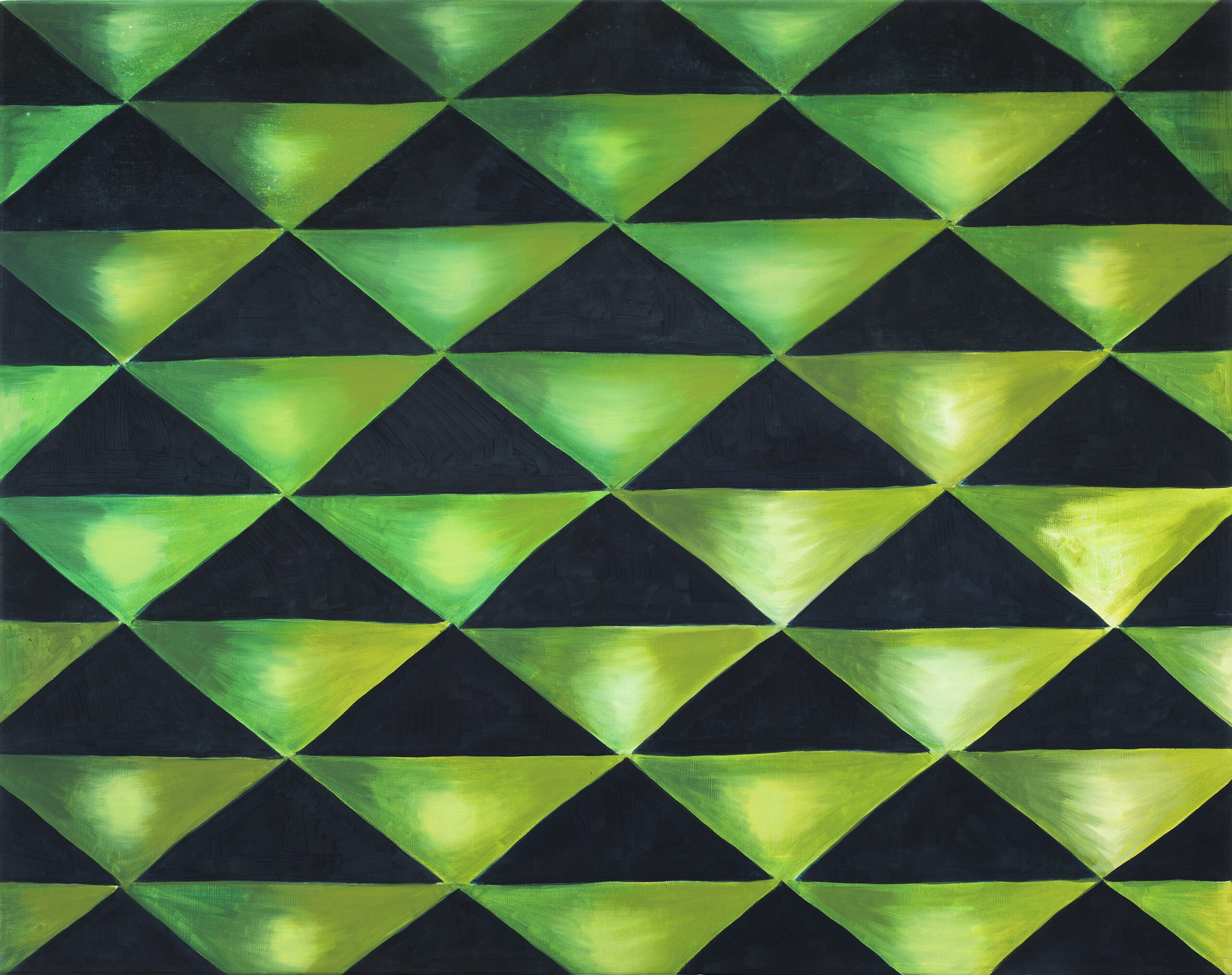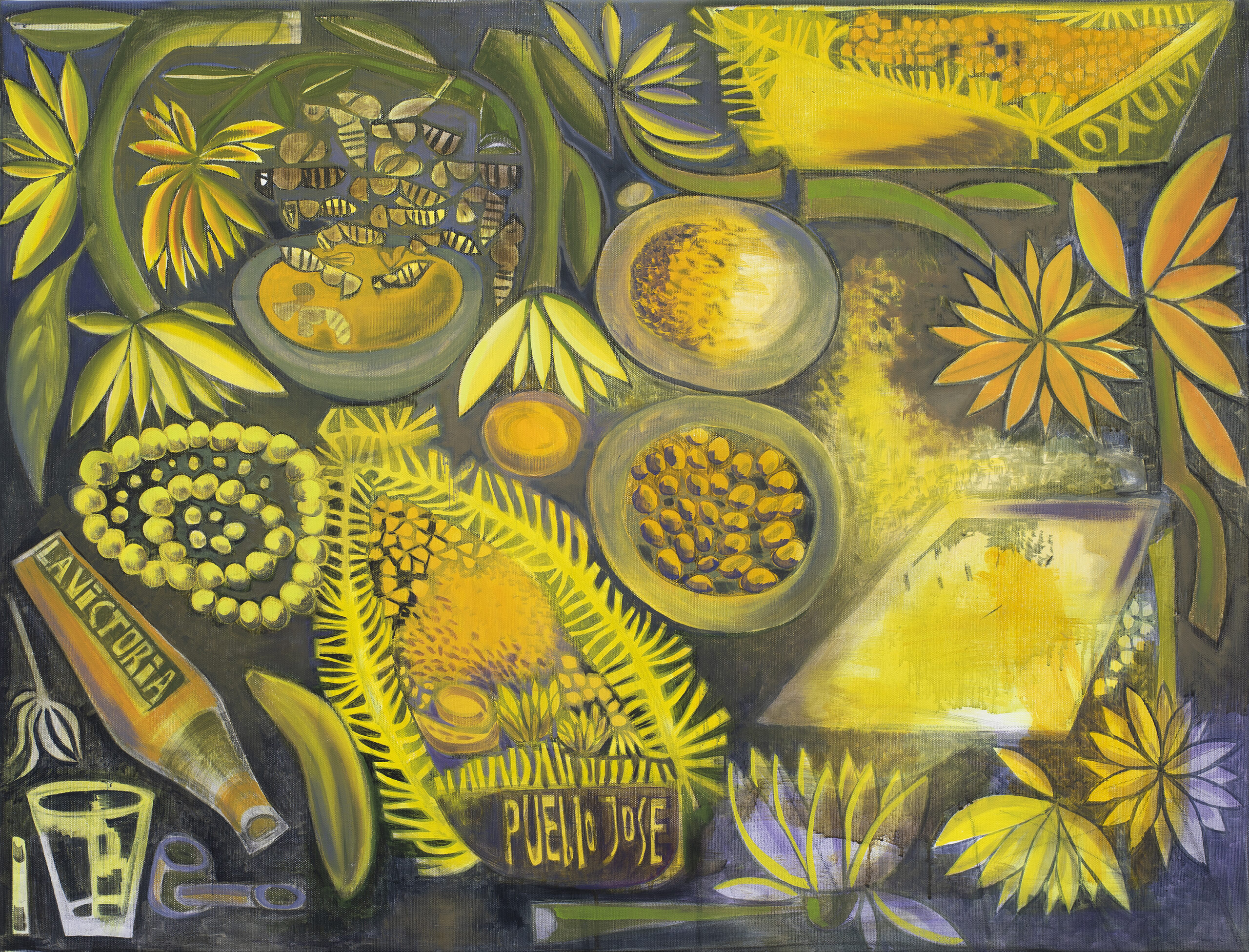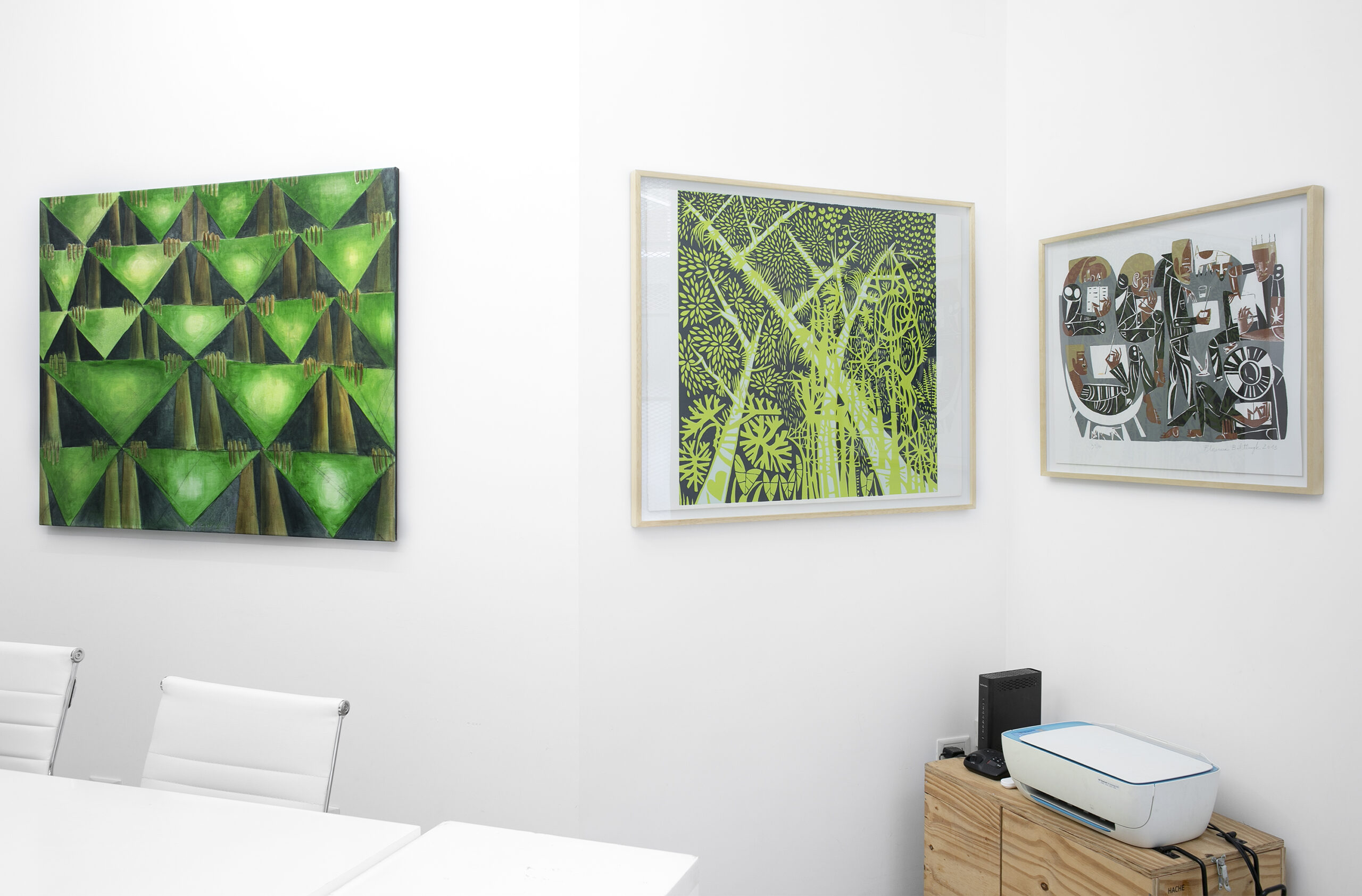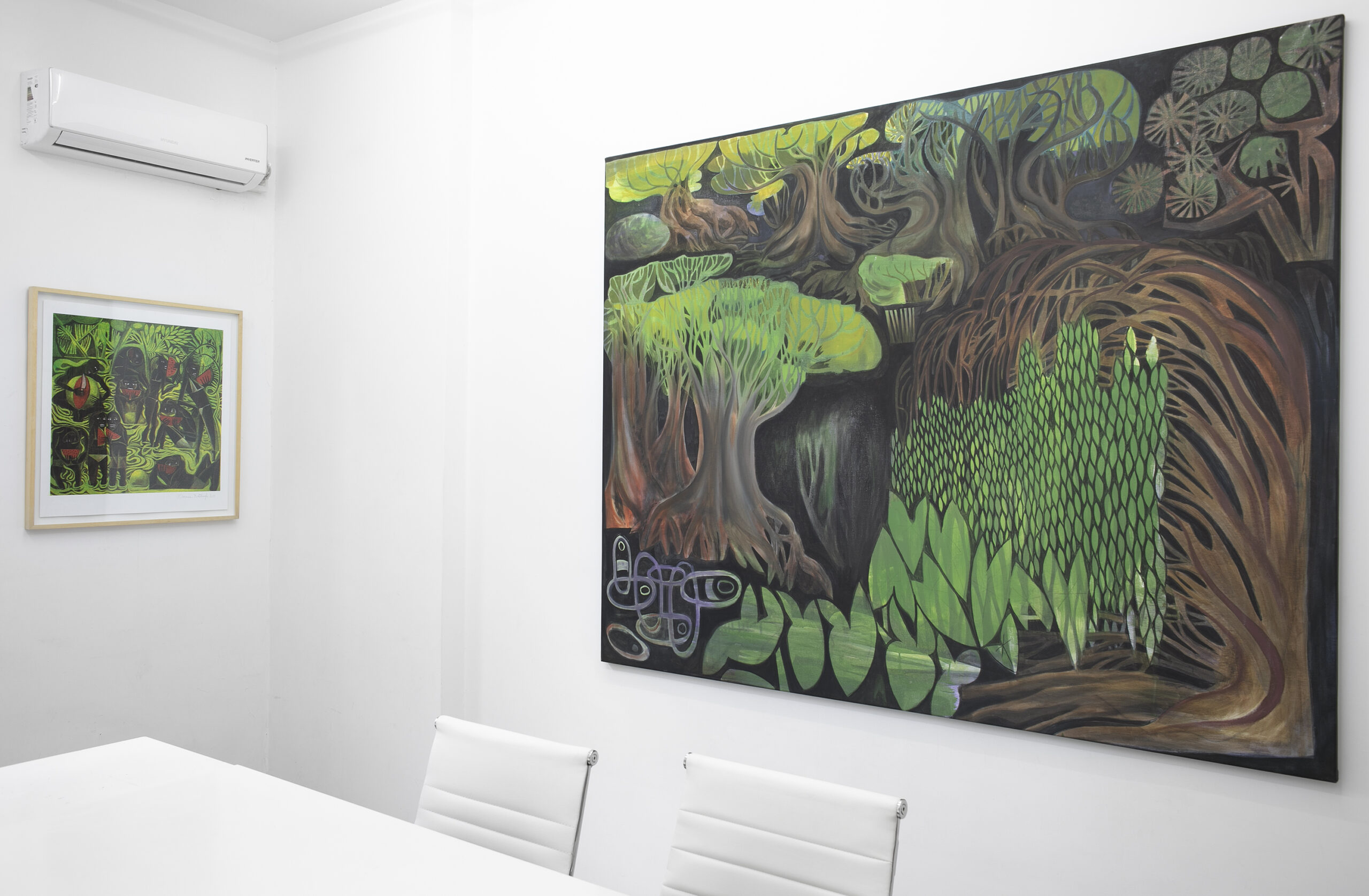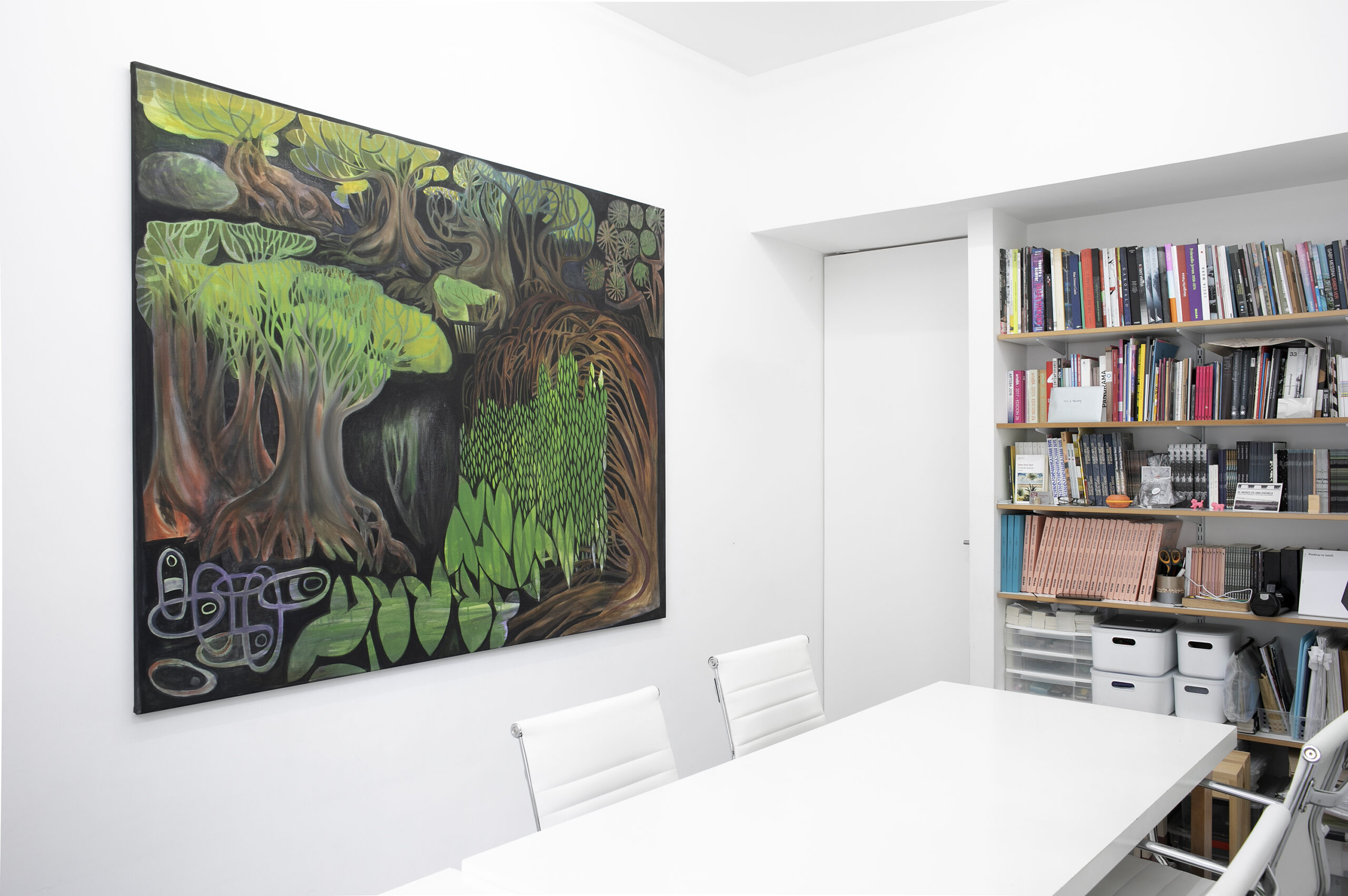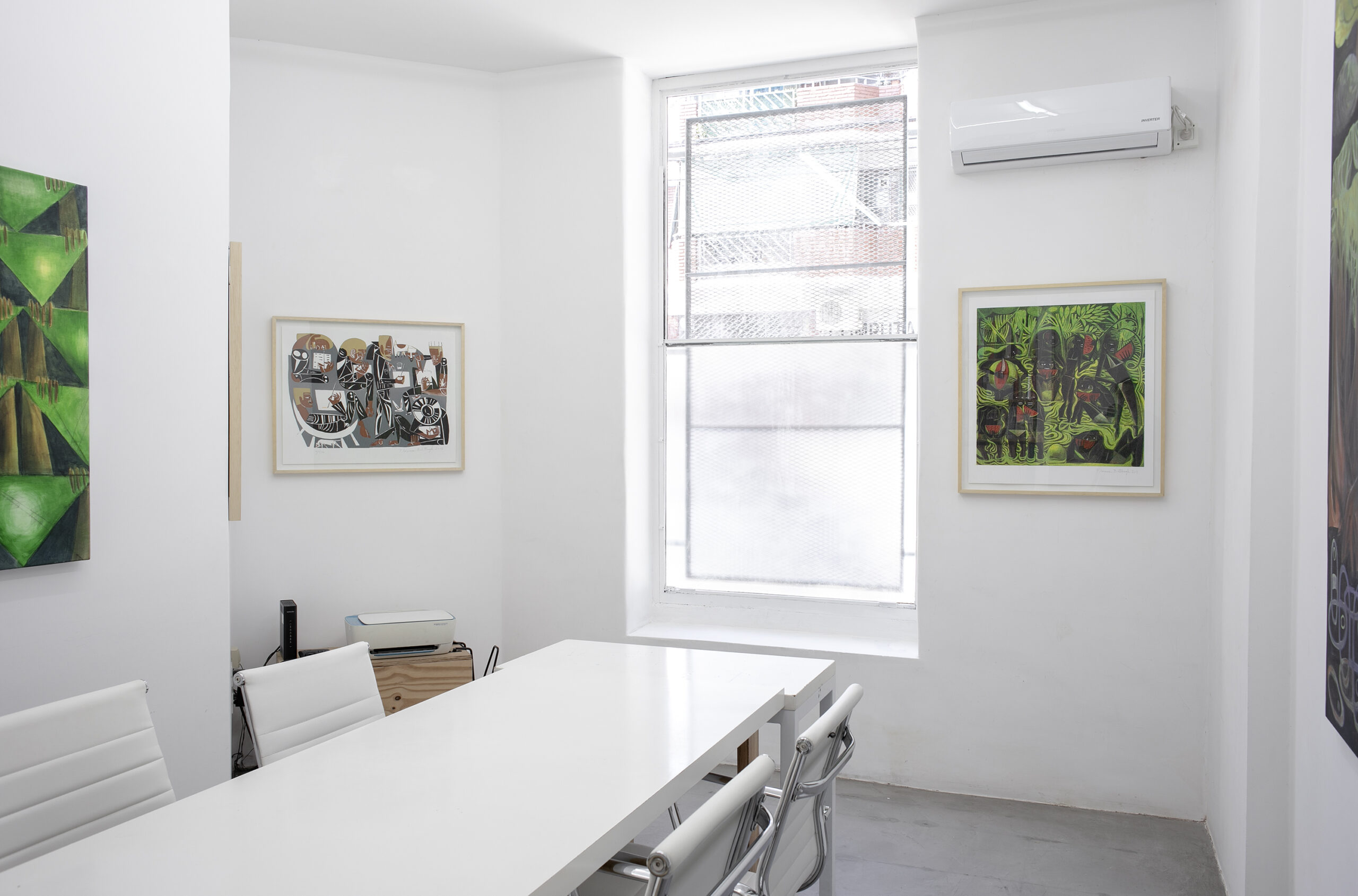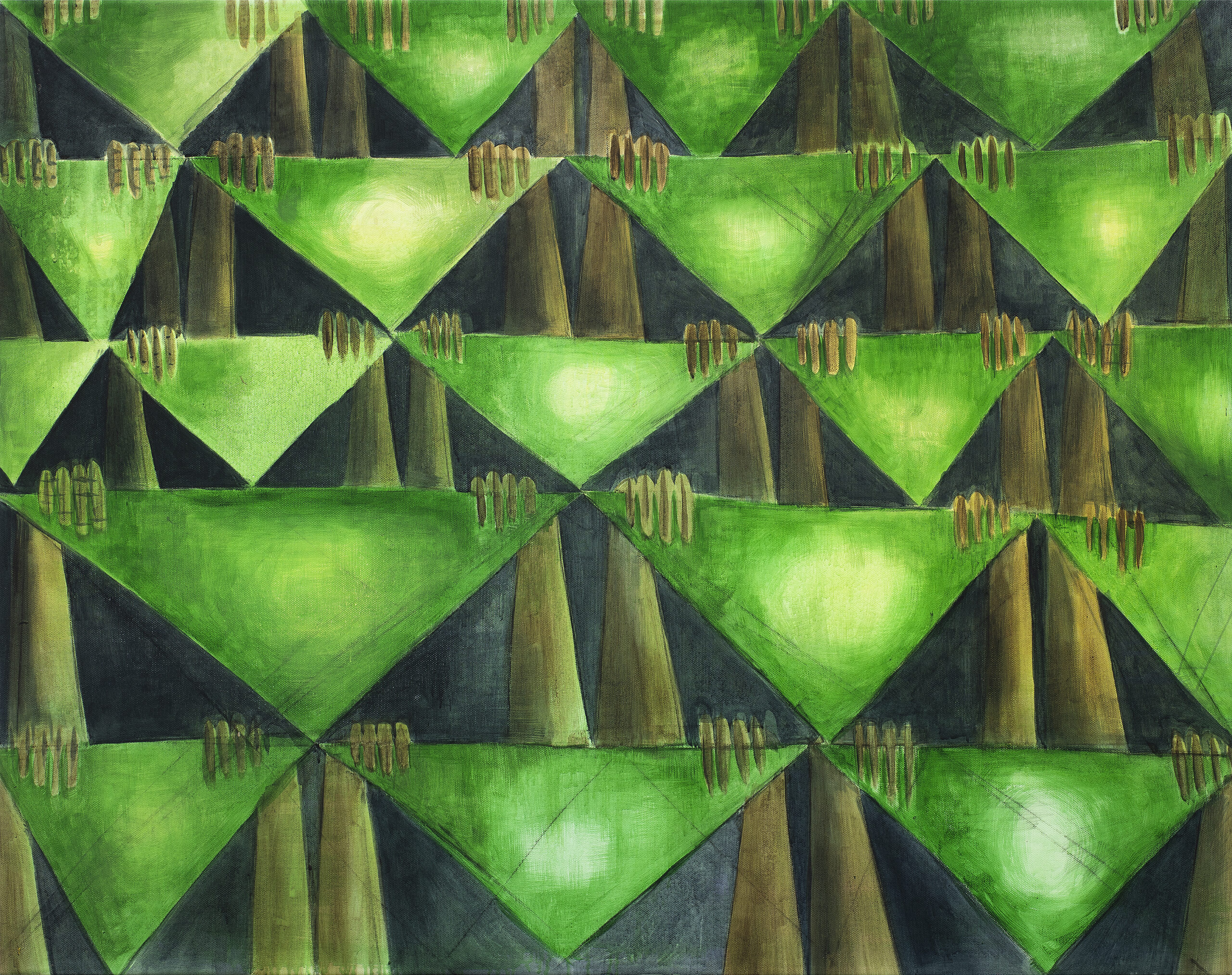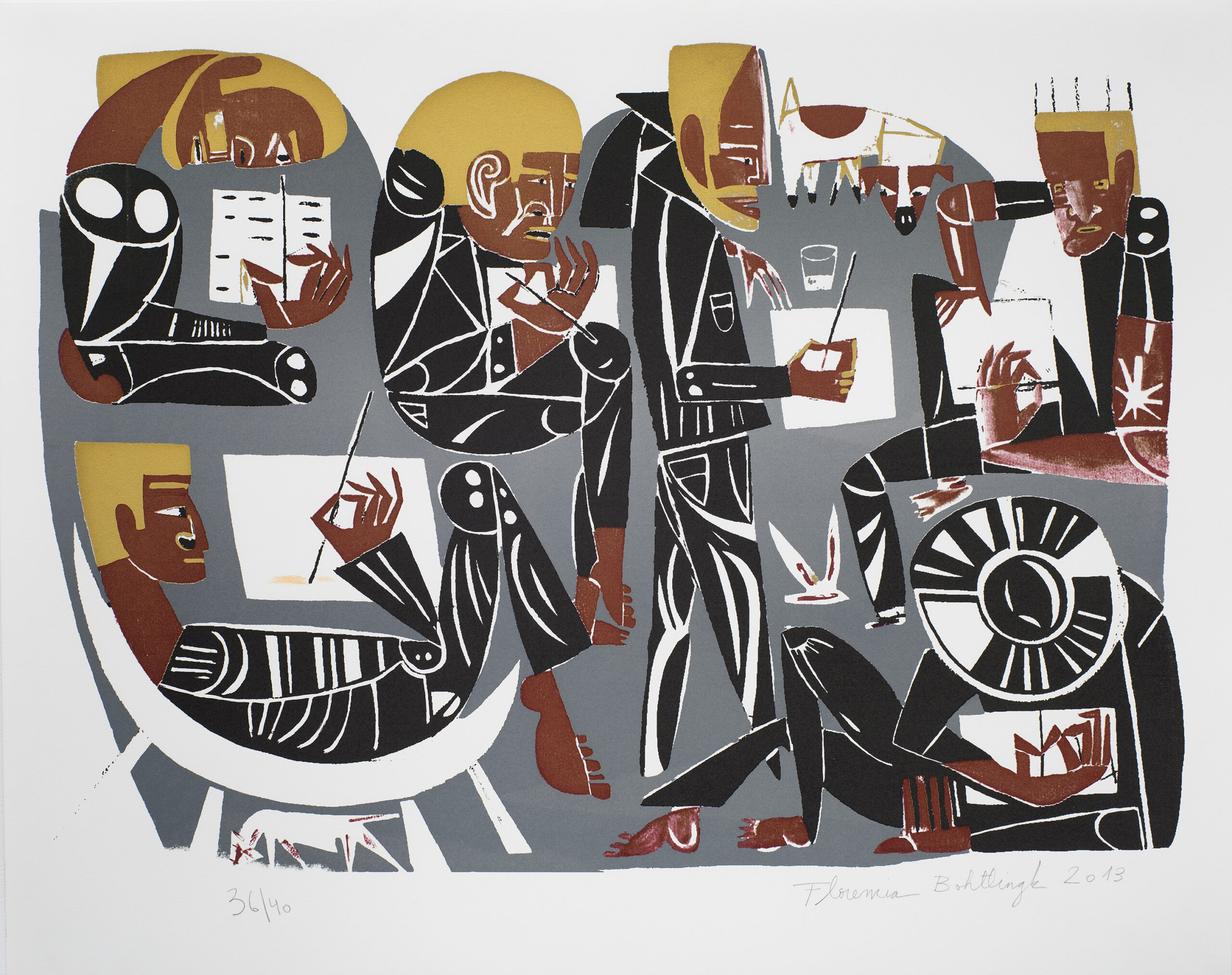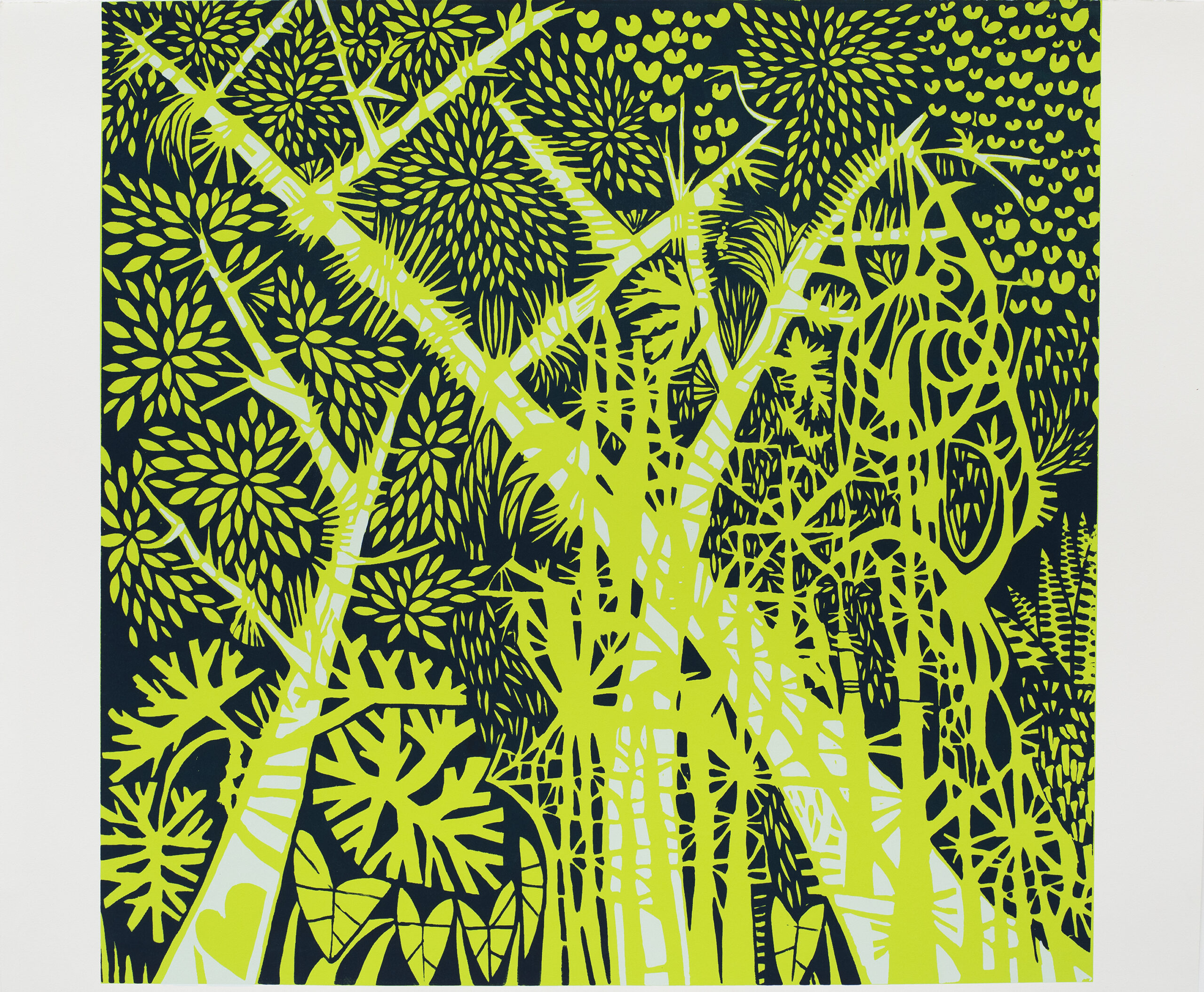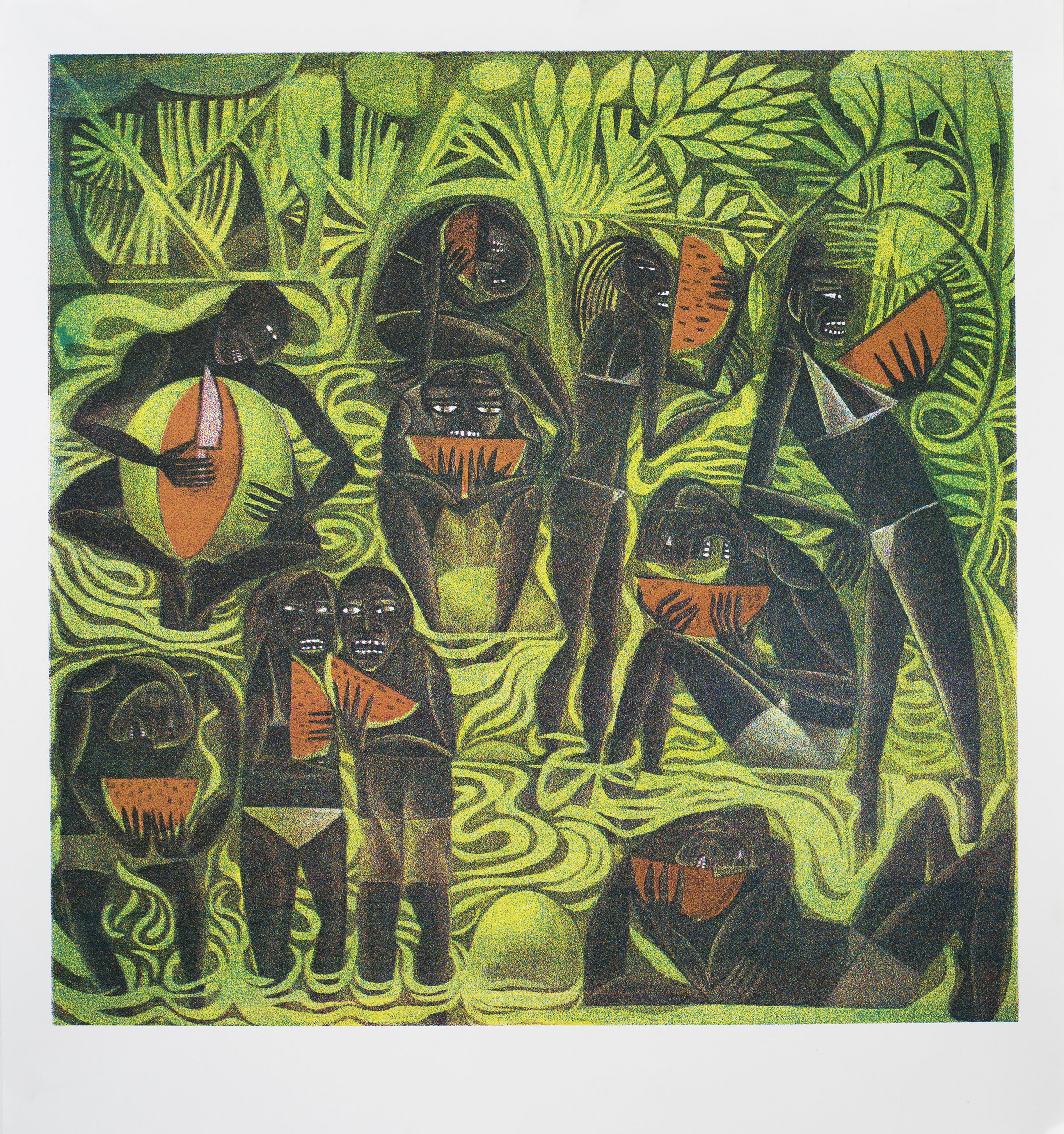Verde y negro
FLORENCIA BÖHTLINGK
CURAted by SANTIAGO VILLANUEVA
Apr 12. — JUL 8. 2022
exhibition view
Ph. Ignacio Iasparra
workS
backroom view
backroom works
Pintando con hijos y amigos, 2013
Florencia Böhtlingk
Serigraphy
23.2 x 29.1 in
Editión 36 of 40
Comiendo sandía en el río, 2015
Florencia Böhtlingk
Serigraphy
27.9 x 25.9 in
Edition 8 of 20
TEXT
A Conversation between Florencia Böhtlingk and Santiago Villanueva
Buenos Aires, austral summer 2022
It’s January, but we are excited. It’s so hot our minds only half work; we can’t finish our sentences or articulate clear ideas, but we meet on Zoom anyway. We have already chosen the paintings for the show, but we will leave some wiggle room. We don’t want everything decided beforehand, but to leave our options open for when we put up the show—that’s when the fun really starts. We think again things we have thought before; some names reappear and others come up for the first time. We overdid it with a brief book by Saer; it serves as our guide.
FLOR
I am at war with the rats. They are invading, and I have no idea how to defend myself—I can’t use poison because there are so many birds around here. Laura Códega told me to try talking to them, and I think I will. But let’s get back to the show. I saw something circular in that limbo, a sort of escape from the public sphere to go lie down on the riverbanks. And that limbo is tied, for me, to Saer’s stories. I think the experience of nature is a bit abstract in literature. The characters in the story “Palo y hueso” [Shovel and Bone] are there beside the reverberating river, the soft sound of the water, the leaves—all of that gets to you, I don’t know how to explain it. At the same time, I think of the riverbank as that shore, that caraguatás weeds and plants, the original miasma—a term of Osvaldo Baigorria’s. We were walking around the nature reserve and he told me, “This is the original miasma—these rotting puddles that everything comes from”—that’s what he said. Like a sort of stench amidst all those things, I thought.
SANTI
What you are saying reminds me of Claudio Iglesias’s text Cosa de gringos and the one he wrote for your book of watercolors, where that zone begins to make itself felt: the frontier, I mean, which in Saer’s story lies in the definition of the word zone. It is connected to something we were talking about the other day: the unfinished thing, which in watercolor is something half erased.1
FLOR
Cosa de gringos mentions at one point Bosque Alegre, a small woods near here where Prilidiano would go walking. A number of the paintings I made last year are of Bosque Alegre. I was struck by how people walk through a zone that so affects them. And I went back, a little, to the landscape without humans, without anecdotes. It might also have to do with the pandemic, isolation, anecdotelessness.
SANTI
The Saer text with the word zone is precisely the debate over where something begins and where it ends, the impossibility of drawing limits. I think there is, in the paintings we are planning to show, both a stark contrast between the city and the landscape and, at the same time, an indeterminate zone between one and the other. Where is the end of the city? Because sometimes someone says, “I live in a city,” but they are beyond its borders. So I was thinking that the contrast between the demonstration in the city and this more barren landscape undermines the idea of a clear cutoff where one thing ends and another begins. There is something about this show that has to do with indeterminacy, about what each thing is.
FLOR
One of the characters in the story says just that: there is no such thing as a zone, it does not exist, because it is impossible to know where it begins and where it ends. That’s why I like painting the umbanda offerings I find in the river—they cross Brazil to bring a little bit of Africa into the Río de la Plata. Zone on zone on zone. Come to think of it, the paintings are also like zones. Maybe they are free zones that let even chaos in, seemingly harmless and unscathed zones that operate through infiltration just like landscape and activism—what a coincidence! Infiltration and emergence. I was thinking about how to connect political demonstrations and landscapes with the zone theme. They are both ecosystems at a given time, in a given place.
SANTI
In our friend Giambiagi—whom we talk about so much—and in Quiroga there is a tie to the landscape, to leaving somewhere not to seek isolation but to take a stance. I was thinking about that, about landscape as activism. This is the first time these clusters of text and persons have appeared in your paintings. The paintings of landscapes could be many different zones and times. But the marches are more anchored in a specific time: they have a precise date and place.
FLOR
Marches can also be zones.
SANTI
Especially in the marches on abortion, where the plaza in front of the Congress was divided in two, with pro-choice and pro-life camps on either side. One half in the pro-choice green and the other in the pro-life blue. There was a territorial question tied to the debate at that time, and the landscape was completely different depending on which side you were on. Two zones. Zone and danger.
FLOR
The landscape and the demands are there. And the experience of both.
SANTI
The sun was bright orange yesterday, and everyone was saying that it looked so beautiful because they are scorching vegetation.
FLOR
The sun did take our breath away for a while yesterday.
SANTI
I like it when you say that the situation is too much for a scrap of paper. I think there is a similar effect at marches: you are in the midst of a political-historical moment that is also too much for a scrap of paper.
FLOR
Standing before a landscape and having to work it out in a painting is just like when I am at a march and I ask myself what a painting of it would be like. The landscape is a sort of preparation for the march. At marches, you have so many sensations—the vendors selling sausage sandwiches, a little girl, a multicolored hairdo, the signs—all on the same level. And in a landscape, you have a mountain, a hummingbird, also on the same level. I am more and more interested in constructivism, which is also very rooted in the Río de la Plata. I am not sure where that comes from, maybe from the mud that takes in everything—that might explain the local constructivism madness.
SANTI
Yes, I was also thinking about constructivism in Torres García’s generation, and its importance here. That brought with it something more organic and organized, which reappears in images from the seventies. In my mind, the constructivist is tied to that more seventies-style muralism by Sánchez, say, and muralists from La Plata like Carpani.
FLOR
Yes, kind of. And that takes us to creating a taste, which is something that Schiaffino and his generation spearheaded, but today I see it as a sort of academy of exclusion. Carpani lingered on in poor taste. Why, if it was an outgrowth of a certain cosa nostra, a certain local sensibility? Like all the painting from the Amazon, which was never even considered. The constructivist is a bit like a game too, a more mechanical, maybe, or more psychomagic game. There are none of the requirements or demands of narrative painting with its perspective.
SANTI
In your paintings, the constructive element is felt most powerfully in the words. Painting marches changes the landscape of Misiones province. There is a kind of back-and-forth.
FLOR
The first painting of the marches was the one of 24M.2 I started building it with the words that caught my attention. I wrote them in my cellphone and used them to start the painting; the painting did not begin with people but with declarations on signs and posters. It was as an onlooker or someone writing in her “dear diary,” as Magda Jitrik put it—the entries are these paintings.
SANTI
The point of view of the landscape is, in a way, brought to bear on the paintings of the marches. It is not the common point of view, because the experience at a march is much more chaotic.
FLOR
When you look at a landscape, nothing stands out. It’s almost invisible or transparent. Marches have something of that flat, grid-like quality as well.
SANTI
The constructive also gives that sense of flatness.
FLOR
With the constructive, you don’t have to work out any formal problems. You just build—this above this above this above this—there is no hierarchy. The words are like a respite from the feat of the landscape.
SANTI
With the constructive, you don’t have to work out any formal problems. You just build—this above this above this above this—there is no hierarchy. The words are like a respite from the feat of the landscape.
FLOR
Green and black. I can’t help but think of The Red and the Black … What might green and black be? Maybe the color of limbo…foliage and shadow. Limbo as the whole Amazon strain that works against the more European idea of developing taste.
SANTI
In limbo, you either can or cannot get out. Schiaffino placed himself in a generation that managed to get painting out of its limbo, but limbo can also be eternal, almost completely still and unchanging. The first idea you have when you see a landscape is a mistaken idea of stillness, of something frozen or stopped short. But the paintings of the demonstrations have an idea of motion; they almost seem to make sounds.
FLOR
At the same time, those riverbank landscapes are of situations that interest the people who
live there, by the river. They are, in a way, boring paintings. You can only understand limbo
from within limbo, where it is like shelter.
SANTI
So the marches are like limbos.
FLOR
Exactly! You took the word right out of my mouth…
SANTI
Because there is also that sense of stillness, that idea of shelter, riverbank, demonstration as shelter or limbo…
FLOR
Individuality is washed away. If you think about it, a landscape is also a collective experience, in a way… Well, I am not sure if you agree, seeing as it is summer, siesta time, and one hundred degrees in the shade…
1 Translator’s note: A medio borrar, the phrase in the Spanish original, is the title of an anthology of
Juan José Saer’s work.
2 Translator’s note: March 24th is a national holiday in Argentina commemorating those disappeared
and murdered by the military dictatorship in power from 1976 to 1983.
English version: Jane Brodie
